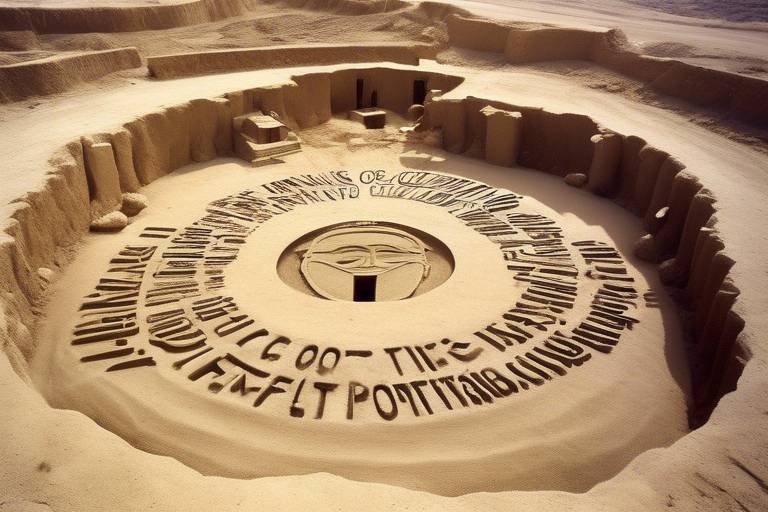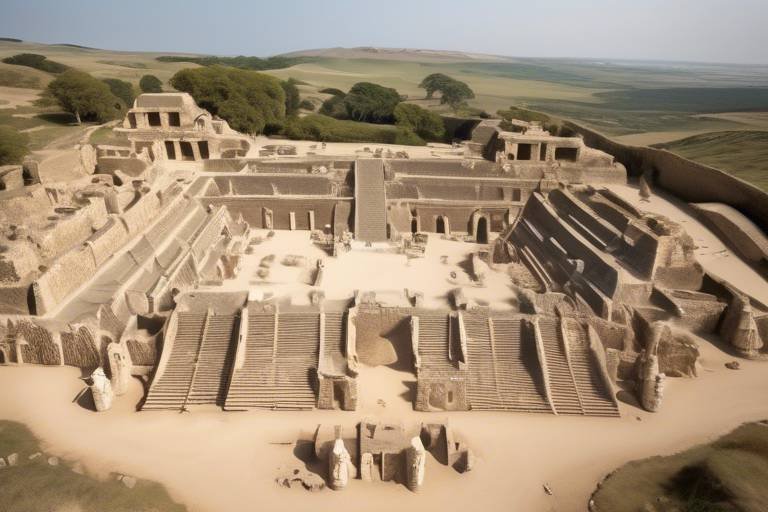The Symbolism of Egyptian Hieroglyphs
Exploring the ancient Egyptian writing system, known as hieroglyphs, reveals a fascinating world of symbolic meanings that were used to convey ideas, stories, and religious beliefs. These intricate and mysterious symbols hold a depth of significance that transcends mere words on a page.

The Origins of Hieroglyphs
The origins of hieroglyphs can be traced back to the predynastic period of ancient Egypt, where early forms of pictorial symbols were used for communication. These primitive symbols gradually evolved into a sophisticated writing system that reflected the rich cultural heritage of the Egyptian civilization. The development of hieroglyphs was closely intertwined with the daily life, religious practices, and artistic expressions of the ancient Egyptians, showcasing the deep connection between language and culture.
As the Egyptian society flourished, so did the complexity of hieroglyphic writing. The intricate symbols began to represent not only objects and actions but also abstract ideas and concepts. Hieroglyphs became a powerful tool for recording historical events, documenting religious beliefs, and preserving the wisdom of the ancient Egyptians for future generations. The evolution of hieroglyphs mirrored the intellectual and artistic advancements of the civilization, embodying the essence of a culture steeped in symbolism and mystique.

The Role of Hieroglyphs in Communication
Hieroglyphs played a vital role in communication within ancient Egyptian society, serving as a multifaceted writing system that transcended mere words. These intricate symbols were not only used for recording historical events and religious beliefs but also for conveying complex ideas and concepts through visual representation. Imagine a world where every stroke and curve of a symbol held the power to narrate grand tales and express profound emotions.
One of the primary functions of hieroglyphs was their presence in monumental inscriptions, adorning the walls of temples and tombs with stories of pharaohs, gods, and the afterlife. These monumental texts served as a visual medium through which the ancient Egyptians communicated their reverence for the divine and their aspirations for eternity. Hieroglyphs became the voice of the past, echoing through time with messages of power, spirituality, and legacy.
Moreover, hieroglyphs were not confined to grand monuments but also permeated everyday life in ancient Egypt. From administrative records to personal letters, these symbols found their way into various aspects of society, bridging the gap between the literate elite and the common people. The ability of hieroglyphs to convey both literal and symbolic meanings made them a versatile tool for communication, transcending the boundaries of language and social status.
Furthermore, hieroglyphs were instrumental in the realm of religious texts, where they served as a conduit between the earthly realm and the divine. The intricate depictions of gods, rituals, and sacred ceremonies in hieroglyphic form not only preserved religious beliefs but also facilitated the practice of ancient Egyptian spirituality. Through these symbolic representations, the ancient Egyptians communicated their devotion, reverence, and understanding of the divine forces that governed their lives.
In essence, hieroglyphs were more than just a writing system; they were a medium of communication that transcended the confines of language, time, and space. The intricate blend of phonetic and ideographic elements in hieroglyphic writing allowed for a nuanced expression of thoughts and emotions, creating a tapestry of meaning that continues to captivate and intrigue us to this day.

The Phonetic and Ideographic Elements
The Phonetic and Ideographic Elements of Egyptian hieroglyphs offer a fascinating insight into the complexity of this ancient writing system. Imagine a world where symbols not only represented sounds but also conveyed deep meanings and concepts. It's like painting a picture with words, where each stroke tells a story beyond the surface. In hieroglyphs, some symbols were phonetic, representing sounds or syllables, while others were ideographic, symbolizing ideas or objects. This dual nature allowed scribes to craft intricate messages that resonated on multiple levels.
To illustrate, let's take the example of a hieroglyph depicting an eye. On one level, it could represent the sound "ir," but on a deeper level, it could symbolize protection, perception, or the Eye of Horus, a powerful ancient Egyptian deity. This blending of phonetic and ideographic elements created a rich tapestry of meaning within hieroglyphic writing, making it a truly versatile and expressive form of communication.
Ancient scribes skillfully combined these elements to craft texts that were not only informative but also imbued with symbolic significance. It was akin to weaving a intricate tapestry of words, where each symbol added a layer of meaning to the overall message. The Phonetic and Ideographic Elements of hieroglyphs truly showcase the ingenuity and creativity of the ancient Egyptians in their quest to communicate ideas, stories, and beliefs through the medium of symbols.
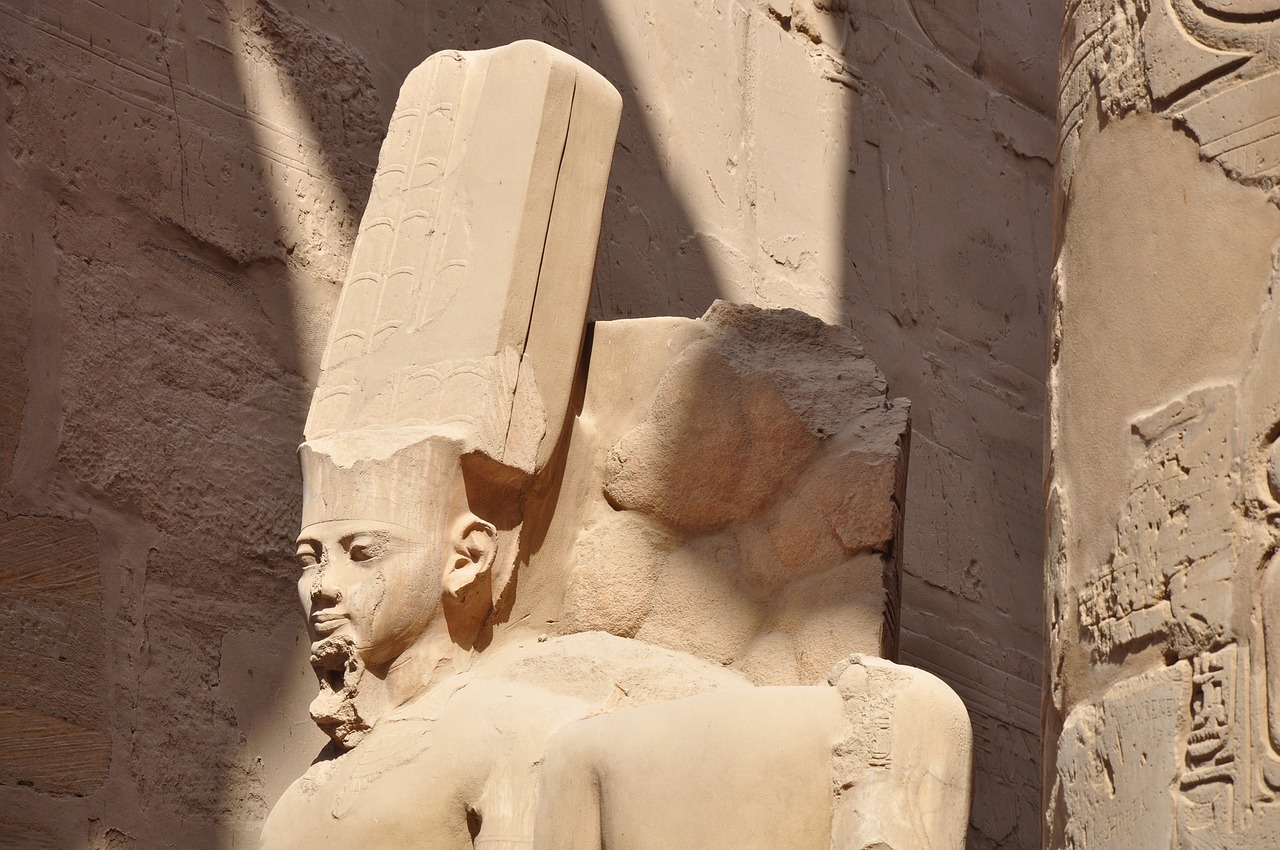
The Religious Significance of Hieroglyphs
When exploring the religious significance of Egyptian hieroglyphs, we delve into a world where symbols held profound meanings beyond mere words. These intricate characters were not just tools for communication but vessels of religious beliefs and practices in ancient Egypt. The hieroglyphs depicted various gods, rituals, and afterlife beliefs, offering a glimpse into the spiritual world of the ancient Egyptians.
One of the most fascinating aspects of hieroglyphs is their role in religious ceremonies and funerary practices. The symbols were used in rituals to honor the gods and ensure a prosperous afterlife for the deceased. The meticulous inscriptions found in tombs and temples were not just decorative but held sacred meanings that were believed to guide the souls of the departed in the underworld.
Moreover, hieroglyphs were intricately intertwined with the concept of divinity in ancient Egyptian culture. The depictions of gods and goddesses in hieroglyphic form served not only as representations but as embodiments of the divine essence believed to permeate the universe. Each symbol carried a sacred significance that connected the earthly realm with the realm of the gods.
As we unravel the layers of symbolism embedded in hieroglyphs, we come to understand the profound spiritual beliefs that guided the ancient Egyptians in their daily lives. The intricate details of hieroglyphic inscriptions reveal a world where the boundaries between the physical and spiritual were blurred, where every stroke of the pen carried a cosmic significance that transcended mere mortal understanding.
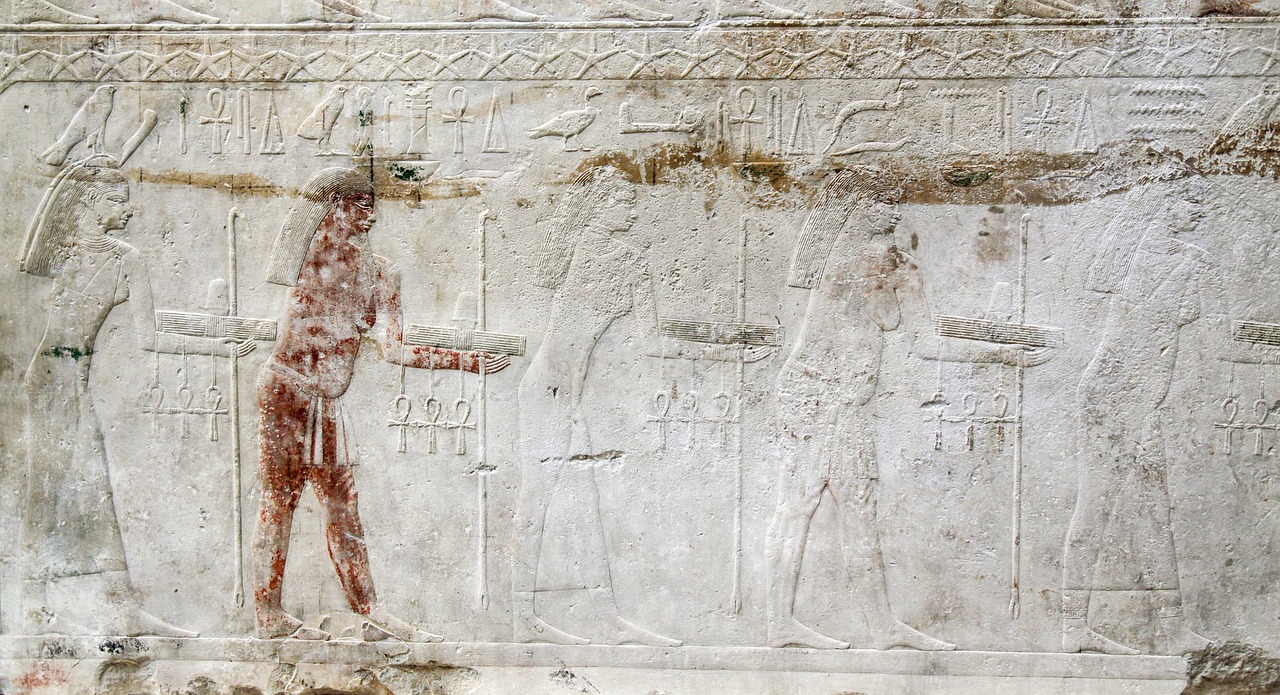
The Evolution of Hieroglyphic Writing
The evolution of hieroglyphic writing in ancient Egypt is a fascinating journey that spans thousands of years, reflecting the development of a sophisticated communication system. Initially, hieroglyphs began as simple pictorial representations of objects and concepts, gradually evolving into a more complex and standardized script. This evolution was driven by the need to convey increasingly abstract ideas and nuanced meanings through written symbols.
One significant milestone in the evolution of hieroglyphic writing was the transition from purely pictorial symbols to a combination of phonetic and ideographic elements. This allowed ancient scribes to represent not only concrete objects but also sounds, words, and abstract concepts. The incorporation of phonetic signs enabled the writing system to express a wider range of ideas and convey more precise meanings.
Over time, the script underwent further refinement, with scribes introducing new signs and symbols to represent specific sounds or words. This process of innovation and standardization led to the creation of a comprehensive hieroglyphic system that could effectively capture the richness and complexity of the ancient Egyptian language.
Moreover, the evolution of hieroglyphic writing was closely intertwined with the cultural and religious practices of ancient Egypt. Hieroglyphs played a crucial role in recording religious beliefs, rituals, and mythological narratives, serving as a medium through which the Egyptians communicated with their gods and preserved their sacred traditions.
As the writing system continued to develop, it became an essential tool for documenting historical events, legal proceedings, and literary compositions. Hieroglyphs were inscribed on temple walls, tombs, papyri, and various artifacts, ensuring that important information was preserved for future generations.
Overall, the evolution of hieroglyphic writing reflects the intellectual and artistic achievements of ancient Egyptian civilization, showcasing their ingenuity and creativity in creating a sophisticated means of communication. The legacy of hieroglyphs endures to this day, captivating scholars and enthusiasts alike with its intricate beauty and profound symbolism.

The Decipherment of Hieroglyphs
Deciphering the intricate symbols of Egyptian hieroglyphs was a monumental task that required a blend of scholarly expertise and relentless determination. At the forefront of this challenging endeavor stood Jean-François Champollion, a French scholar whose unwavering commitment to unraveling the mysteries of hieroglyphic writing ultimately led to a groundbreaking breakthrough. Champollion's pioneering work in the early 19th century paved the way for the translation of ancient Egyptian texts and the unlocking of their profound meanings.
Through meticulous study and comparison of known languages, Champollion made significant strides in understanding the phonetic and ideographic elements of hieroglyphs. By deciphering the Rosetta Stone, a crucial artifact inscribed with three scripts including hieroglyphs, Champollion successfully identified key phonetic correspondences that enabled the translation of previously indecipherable texts. This pivotal moment marked a turning point in the study of ancient Egyptian civilization, shedding light on its rich history and cultural heritage.
Champollion's decipherment of hieroglyphs not only revolutionized the field of Egyptology but also opened up a treasure trove of knowledge about the ancient world. His groundbreaking achievements continue to inspire scholars and enthusiasts alike, showcasing the power of human intellect and perseverance in unlocking the secrets of the past.
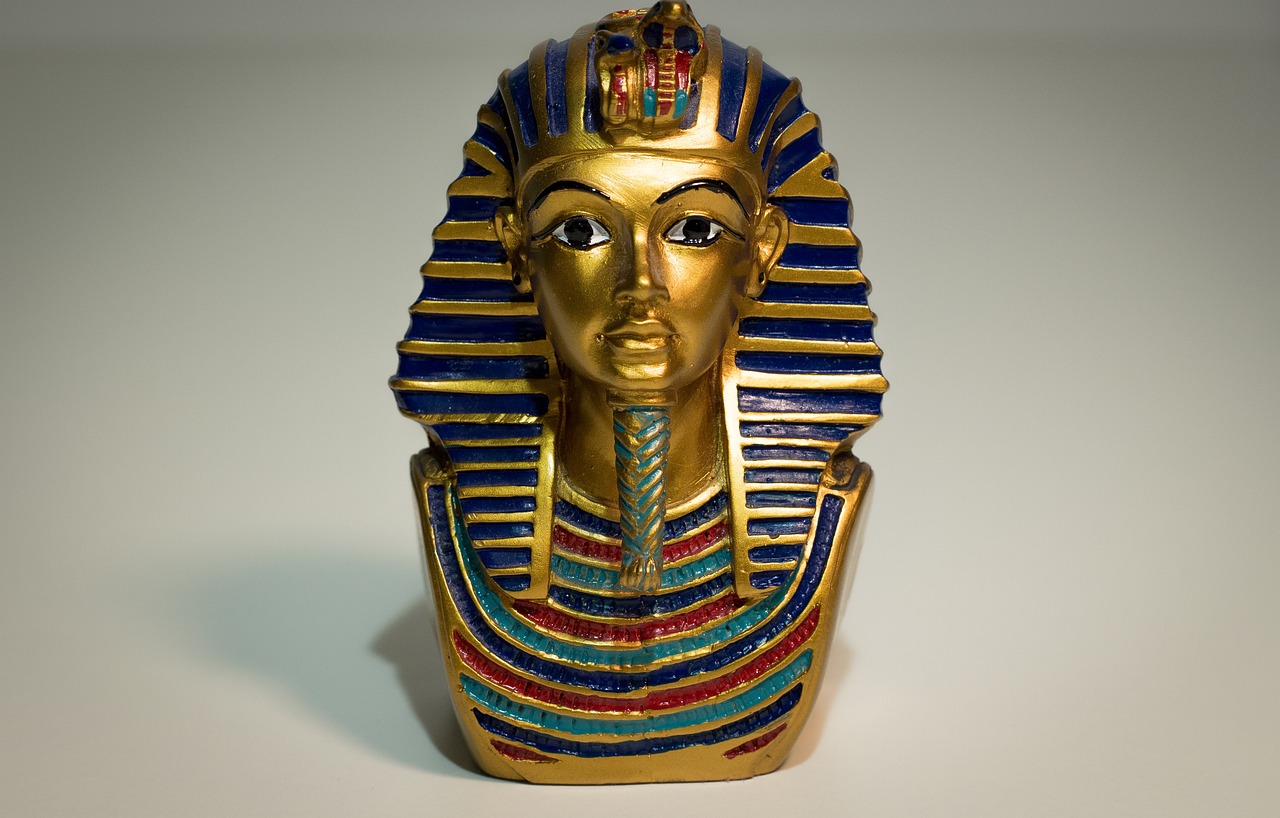
The Legacy of Hieroglyphs in Modern Times
The legacy of Egyptian hieroglyphs continues to resonate in modern times, transcending millennia to influence various aspects of contemporary culture. These ancient symbols, once used for communication and religious purposes, now serve as a source of inspiration for artists, designers, and enthusiasts worldwide.
One of the most prominent ways in which hieroglyphs have left their mark on modern society is through art and design. The intricate and visually striking nature of these symbols has captivated the imagination of creative minds, leading to their incorporation into various forms of artistic expression. From fashion to architecture, hieroglyphs add a touch of mystique and historical depth to modern creations.
Moreover, the allure of hieroglyphs extends beyond the realm of art, permeating popular culture in subtle yet significant ways. References to Egyptian symbols can be found in movies, video games, and even advertising campaigns, underscoring the enduring fascination with ancient Egypt and its enigmatic writing system.
Furthermore, the study of hieroglyphs has not only enriched our understanding of ancient civilizations but has also paved the way for advancements in linguistics and archaeology. The decipherment of hieroglyphic texts, spearheaded by scholars like Jean-François Champollion, has opened up new avenues of research and scholarship, shedding light on the complexities of ancient Egyptian culture.

The Cultural Significance of Hieroglyphs
The cultural significance of hieroglyphs in ancient Egyptian society is profound and multifaceted. These intricate symbols were not only a form of communication but also played a crucial role in preserving the history, literature, and religious beliefs of the civilization.
Hieroglyphs served as a means of recording important events, such as royal decrees, military victories, and religious ceremonies. They were inscribed on temples, tombs, and monuments, ensuring that these significant moments were immortalized for future generations to study and appreciate.
Moreover, hieroglyphs were instrumental in the preservation of ancient Egyptian literature. Sacred texts, myths, and stories were written in hieroglyphic form, allowing the wisdom and knowledge of the past to be passed down through the ages. This literary tradition provided insights into the beliefs, values, and customs of the ancient Egyptians.
Religious beliefs were deeply intertwined with hieroglyphic writing, as many symbols held sacred meanings associated with gods, rituals, and the afterlife. The intricate nature of hieroglyphs allowed for complex theological concepts to be expressed visually, fostering a deep spiritual connection within the society.
Furthermore, the cultural significance of hieroglyphs extended beyond the realm of ancient Egypt. These symbols have inspired artists, designers, and scholars throughout history, influencing various art forms and disciplines. The timeless appeal of hieroglyphs continues to captivate audiences worldwide, showcasing the enduring legacy of this ancient writing system.
Frequently Asked Questions
- What are hieroglyphs?
Hieroglyphs are a system of writing used by ancient Egyptians, consisting of intricate symbols that represent sounds, words, or concepts.
- How were hieroglyphs deciphered?
Hieroglyphs were deciphered through the efforts of scholars like Jean-François Champollion, who used the Rosetta Stone and knowledge of Coptic language to unlock the meanings of the ancient symbols.
- What was the role of hieroglyphs in ancient Egyptian culture?
Hieroglyphs played a crucial role in communication, religious ceremonies, funerary practices, and preserving historical records in ancient Egyptian society.
- Can hieroglyphs still be seen today?
Absolutely! Hieroglyphs can be found in ancient temples, tombs, and artifacts across Egypt, offering a glimpse into the rich history and beliefs of the ancient civilization.
- Are hieroglyphs still used in modern times?
While hieroglyphs are no longer used as a primary writing system, they continue to influence art, design, and popular culture, showcasing their enduring legacy in the modern world.










